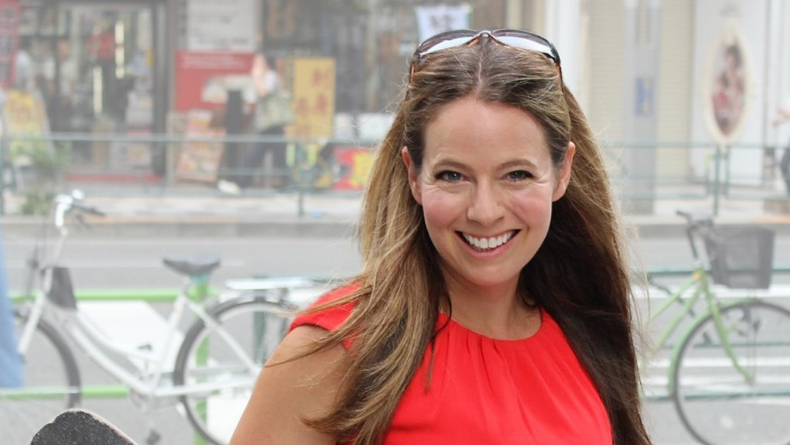The Power of Emotion
Soness Stevens’ talk at the November FEW meeting started with her asking us to write two words on the bottom of our shoes. Any two words that expressed what we wanted in that moment were acceptable. “Happy,” “support,” “connect,” and “fun” were some examples of what we chose. The meaning of this exercise? Stand on intention. It is the secret weapon that Soness, head coach for TedxKyoto and TedxFukuoka and co-owner of Show and Tell Us, a Tokyo-based presentation training company, uses to empower her speakers before they go on stage.
The trick is making sure the intention comes from your heart. “When someone wrote standing ovation, guess what the response was? No one stood up,” Soness said. “It isn’t easy to get on stage an emote. You have to make a decision to connect with people.”
To be effective at giving a presentation, Soness says to “decide what emotional state you want to be in. Then, decide what emotional state you want your audience to be in. Next, go back to a time when you felt that way.”
Soness recommended “anchoring in” to feel the feelings you remember and get into that position. For example, if you want to feel sad, slump your shoulders. If you want to feel happy, stand tall, chest barreling out. By connecting with your own desired emotions, “you have now just empowered yourself,” said Soness.
But, how can you connect in real life? Be curious. Give yourself time. Know your type. Soness gave tips how to apply your stage persona into your real life presence, especially if you find yourself as the shy person waiting on the sidelines for an invite to the conversation. “Being shy is just an emotional state, not knowing the rules of the game,” she said.
Want to transition from “shy to connect?” Soness suggests trying out the following: be curious. “When you are talking to people, genuinely listen to them.” Also, give yourself time. “Rapport begins before you walk through the door,” she said. Connect with people on Facebook and other social media platforms, for example.
Soness divided people into four categories:
1) Why? Love engagement, dialogues, inspiration, engagement: 35% of people
2) What? Ask what do I need to know? Love details: 22% of people
3) How? How will I take action to create the desired outcome?: 18% of people
4) What if? Love questions: 25% of people
Which one are you? Most people, it turns out, are a combination of categories. Knowing which one you are and identifying the type of another will help you have more effective connections.
By Christina Hanazawa-Gallagher, Vice President of FEW
Soness Stevens works with TedxKyoto and TedxFukuoka as the head speaker coach, live streaming producer and emcee. You may have seen her on NHK, Fox TV Japan, or her weekly online show. Soness wrote “Show-N-Tell: Presenting from the Heart,” Japan’s first multimedia e-book used in universities in Japan. She teaches Japan’s first university credited course on happiness using positive psychology based on her book “28 Days to :)” Soness is a trainer of neuro-linguistic programming and hypnosis. She is also the official English voice of Hello Kitty.












Leave a Reply